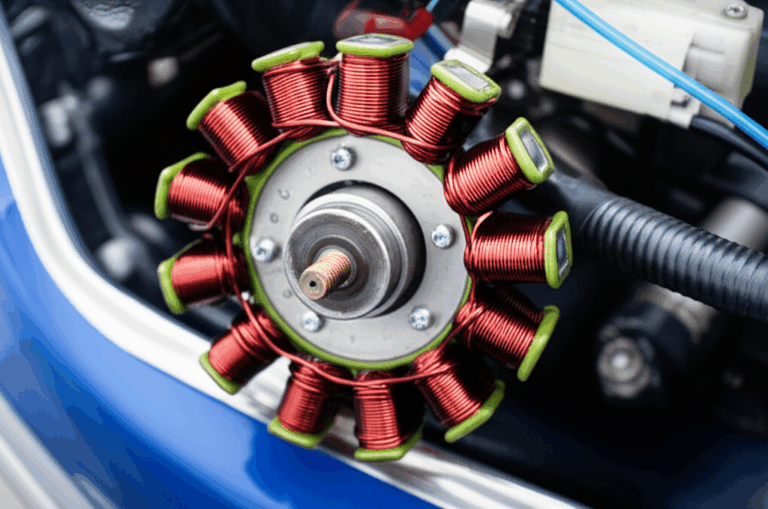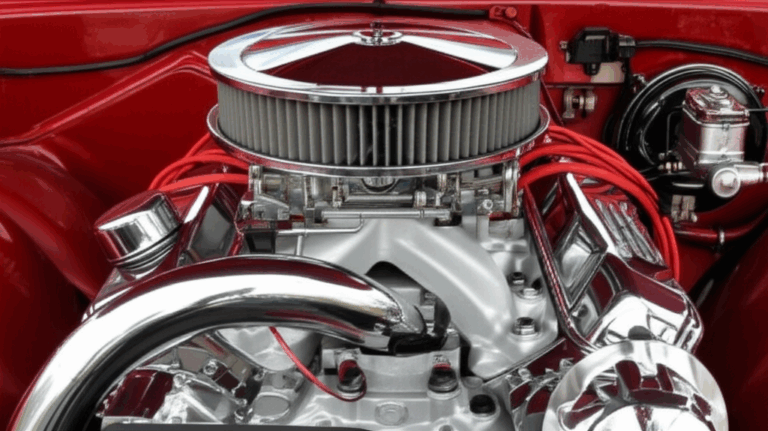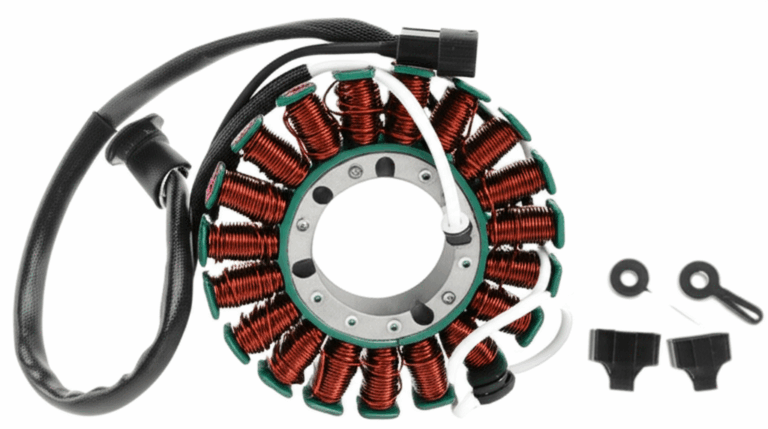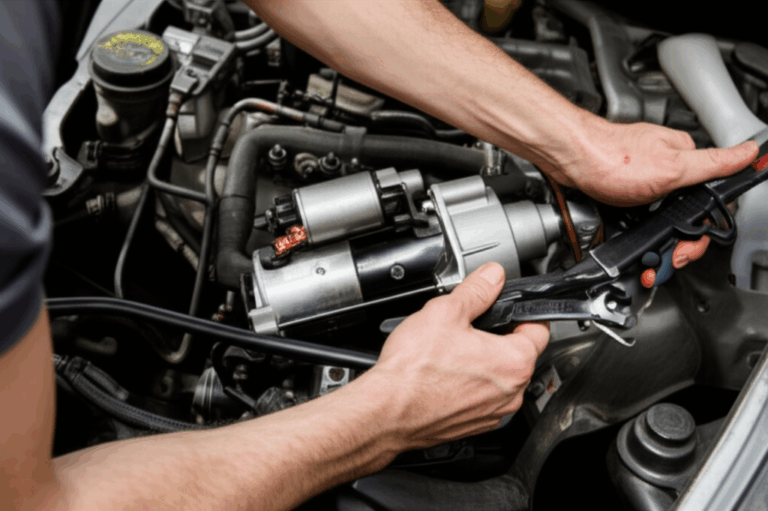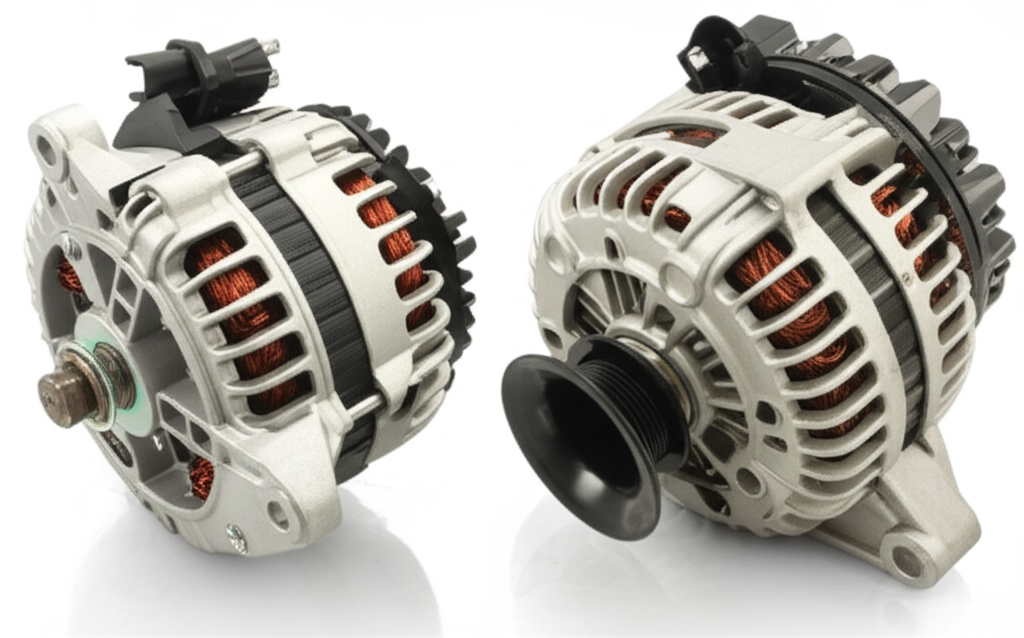
Is a Stator the Same as an Alternator? Understanding Your Vehicle’s Charging System
Short answer. No. A stator is a stationary subassembly inside an alternator. The alternator is the complete electromechanical device that converts mechanical energy from the engine into regulated electrical power for the vehicle. That distinction sounds simple. It matters a lot when you design, specify, test, source, or repair these components.
Engineers, designers, and procurement managers ask this question for a reason. You need clarity about function, materials, and manufacturability to hit performance targets and budgets. You also want to avoid muddy diagnostics like “alternator failure” when the real root cause lives in the stator windings or the rotor assembly. So let’s solve the confusion, then go deeper into the electrical steel laminations, manufacturing processes, and application choices that drive performance and cost.
In this guide we use the Expert Consultant model: Problem → Explain → Guide → Empower. You get plain-language fundamentals with enough depth to support a design review or a supplier conversation.
In This Article
- The Quick Answer and Why It Matters
- What Exactly Is an Alternator?
- What Is a Stator? The Heart of Electrical Generation
- Engineering Fundamentals: Why Laminations Matter
- How Stator and Alternator Work Together
- Alternator vs Stator: Key Differences at a Glance
- Material Considerations for Stator and Rotor Cores
- Manufacturing and Assembly: From Cutting to Stacking
- Which Application Is This For? Automotive, Motorcycle, Marine, Industrial
- Diagnostics: How to Test an Alternator or Stator
- Cost, Sourcing, and Warranty Considerations
- Common Symptoms of Charging System Problems
- FAQs
- Engineering Takeaway and Next Steps
The Quick Answer and Why It Matters
Problem: Your team needs to confirm whether a stator equals an alternator. You also need to know which part does what. If you hear “bad stator” vs “bad alternator,” the repair plan and the bill can look very different.
Explain: The stator is the stationary core with copper windings. The alternator is the full system: rotor, stator, rectifier (diode bridge), voltage regulator, bearings, cooling fan, housing, and pulley or gear interface. The alternator generates AC, then rectifies it to DC for the battery and the vehicle electrical system.
Guide: Use this distinction to improve diagnostics, to spec the right materials, and to make smarter “repair vs replace” calls. In modern vehicles you usually replace the whole alternator when an internal component fails because labor, warranty, and part integration favor a complete unit swap.
Empower: When you talk to a lamination supplier or alternator manufacturer, ask about stator lamination grade, thickness, insulation class, stacking factor, and winding strategy. Small choices here drive charging voltage stability, efficiency, thermal performance, and service life.
What Exactly Is an Alternator?
An alternator is an AC generator driven by the engine via a pulley and drive belt. It converts mechanical energy into electrical energy. It then uses a rectifier (diode pack or diode bridge) to turn AC into DC. A voltage regulator controls the rotor field current to keep output voltage stable as loads change and as engine RPM swings.
Core components:
- Rotor: A rotating magnetic field source. In automotive units you usually see a wound field rotor through slip rings and carbon brushes. Some designs use permanent magnets.
- Stator: The stationary laminated iron core with copper windings where the induced EMF creates AC current.
- Rectifier: A diode bridge (rectifier bridge) that converts 3-phase AC to DC.
- Voltage regulator: Maintains charging voltage within a narrow band.
- Bearings and housing: Mechanical support for rotor rotation and cooling pathways.
- Cooling fan: Moves air through the alternator to manage heat rise.
What it does in the vehicle:
- Recharges the battery.
- Powers electrical loads: headlights, HVAC blowers, infotainment, power windows, and safety systems.
- Maintains stable charging voltage output despite RPM changes and load swings.
You’ll hear terms like alternator output current, alternator output voltage, alternator efficiency, and power generation rating. They drive your system-level decisions because the alternator sits at the center of the automotive electrical system.
What Is a Stator? The Heart of Electrical Generation
The stator is the stationary iron core with copper windings. It uses a laminated structure to reduce eddy current losses. As the rotor’s magnetic field sweeps past the stator teeth and slots, it induces AC voltage in the windings per Faraday’s Law of Induction. Lenz’s Law defines the direction of the induced current and the opposition to the change in magnetic flux.
Think of the stator as the “power pickup” in the machine. The rotor creates a changing magnetic field. The stator “captures” that change and converts it into electrical energy. The stator’s winding configuration, slot geometry, tooth width, and stack length strongly influence:
- Induced EMF and output voltage shape
- Copper loss (I²R) tied to winding resistance
- Core loss tied to the lamination material, thickness, and flux density
- Thermal performance and efficiency at different speeds
Common phrases you may encounter:
- Stator winding resistance
- Stator function in alternator
- Copper windings and iron core laminations
- Armature winding vs field winding (terminology shifts depending on machine type)
- Permanent magnet alternatives in some machines
In motorcycles and many ATVs, a “stator” often refers to the replaceable core-and-winding assembly that works with a permanent magnet rotor. This sometimes fuels the “is a stator the same as an alternator” confusion. In that context the stator is part of the alternator function, not the entire system.
Engineering Fundamentals: Why Laminations Matter
If you design or source alternators, motor cores, or transformers, you care about core losses. Two big ones:
- Eddy current loss: Circulating currents induced in the core by changing magnetic fields generate heat and waste energy.
- Hysteresis loss: Energy dissipated as the magnetic domains in the steel flip direction each cycle. This depends on the material’s coercivity and B-H curve.
Analogy time. Imagine swirling whirlpools in a river. Eddy currents are those unwanted whirlpools forming inside a solid steel core. Laminations act like breakwaters. Thin, insulated sheets chop large whirlpools into tiny ripples. That reduces loss and heat rise.
Key principles:
- Thinner lamination thickness reduces eddy currents at higher electrical frequencies.
- Nonoriented electrical steel (CRNGO) is common in rotating machines because it offers more uniform magnetic properties in all directions.
- Grain-oriented electrical steel (CRGO) excels in transformers where flux flows in one direction.
- Insulation coating class and quality matter because they limit interlaminar eddy currents.
- Stacking factor (the ratio of iron to total stack height) reduces effective cross section and must be accounted for in design models.
In alternators, electrical frequency increases with pole count and speed. A 12-pole machine at high RPM sees hundreds of hertz or more. That is why lamination thickness, alloy grade, and coating selection drive performance and thermal margins.
For standards and measurement approaches, engineers often reference IEC 60404 for magnetic testing methods and ASTM specifications for electrical steel classifications and coatings. Exact standards vary by region and supplier. Confirm with your material provider during qualification.
For a deeper dive into steel options, see the overview on electrical steel laminations.
How Stator and Alternator Work Together
Here’s the synergy in a few steps:
This is the energy conversion pipeline: mechanical to electrical energy. If any element drifts out of spec, the system tells on itself. You see the battery light on the dashboard, dim headlights, dead battery, or intermittent electrical faults. Diagnostics should pinpoint where things went sideways.
Analogy: Think of the alternator like a band. The rotor is the drummer who sets the beat. The stator is the bassist who turns that beat into a groove you can feel. The rectifier and regulator handle the mixing and keep everything clean and on tempo.
Alternator vs Stator: Key Differences at a Glance
- Scope:
- Alternator: The complete assembly that generates, rectifies, and regulates output.
- Stator: The stationary laminated core and windings where AC is induced.
- Mobility:
- Alternator: Rotates as a unit around a shaft supported by bearings.
- Stator: Fixed in the housing and does not rotate.
- Function:
- Alternator: Generates AC, converts it to DC, and maintains regulated output voltage.
- Stator: Induces AC current as the rotor field cuts the windings.
- Failure language:
- “Alternator failure” is any fault inside the assembly.
- “Stator failure” is a specific internal fault like winding shorts, open circuits, or insulation breakdown.
Material Considerations for Stator and Rotor Cores
Your alternator’s core performance starts with the base material and the lamination strategy. You balance magnetic performance, frequency response, manufacturability, and cost.
Common material classes and tradeoffs:
- Nonoriented silicon steels (CRNGO, M-grades):
- Use: General-purpose rotating machines including automotive alternators and BLDC stators.
- Pros: Good magnetic properties in all directions, widely available, cost effective, compatible with high-volume stamping.
- Cons: Losses rise at high flux densities and very high frequencies compared to premium alloys.
- Grain-oriented silicon steels (CRGO):
- Use: Transformers, where flux follows the rolling direction.
- Pros: Low loss in the rolling direction.
- Cons: Not ideal for rotating machinery due to anisotropy.
- High-silicon or specialized low-loss grades:
- Use: Higher speed or higher frequency designs where eddy current loss dominates.
- Pros: Reduced core loss.
- Cons: Higher material cost and sometimes tougher stamping behavior.
- Cobalt-iron alloys (FeCo):
- Use: Aerospace or high-power-density applications that push flux density and temperature limits.
- Pros: Very high saturation flux density and strong performance at high frequency.
- Cons: Significantly higher cost with supply chain implications.
Design parameters to document:
- B-H curve target range for your operating flux density
- Coercivity and core loss vs frequency curve
- Lamination thickness (for many alternators 0.35 mm or thinner can help at higher electrical frequencies)
- Insulation coating class and dielectric strength
- Stacking factor impact on magnetic cross section
- Mechanical flatness and burr specs after cutting
- Slot geometry and tooth width relative to winding fill and thermal limits
If you need an overview of options from a single place, this page on motor core laminations summarizes common configurations and applications.
Manufacturing and Assembly: From Cutting to Stacking
Manufacturing choices shape both performance and cost. You will weigh process capability, tolerances, edge quality, electrical loss impact, and scalability.
Cutting options:
- Progressive die stamping:
- Best for high-volume production with stable designs and tight piece-part cost targets.
- Pros: Excellent throughput, repeatability, and cost per part at scale.
- Cons: Upfront tool cost. Tool wear can affect burr and tolerance if not maintained.
- Laser cutting:
- Best for prototyping, complex geometries, and low to medium volume.
- Pros: No tooling, rapid design iteration, high dimensional flexibility.
- Cons: Heat-affected zone can increase local loss if parameters and post processing are not controlled.
- Wire EDM or waterjet:
- Best for very tight tolerance or specialty shapes.
- Pros: Low burr and excellent feature quality.
- Cons: Lower throughput and higher per-part cost.
Stacking and joining methods:
- Interlocking features:
- Tabs and notches that snap together like LEGO bricks to create rigid stacks without welding.
- Pros: Fast assembly and no heat input into the stack.
- Cons: Design complexity and potential local stress risers.
- Bonding (varnish or adhesive):
- Pros: Very low vibration noise and good structural integrity. Uniform stack quality.
- Cons: Process control and cure parameters matter.
- Riveting, cleating, or welding:
- Pros: Simple hardware and established processes.
- Cons: Welding adds heat that can affect magnetic properties if not controlled.
Surface insulation coatings:
- Manage interlaminar eddy currents and corrosion.
- Must survive slotting, insertion, and thermal cycles.
- Confirm dielectric strength and bake cycles with your supplier.
Rotor specifics:
- Rotor laminations tolerate different stress and balance demands than stator stacks. Precise alignment and secure shrink-fit or bonding are key.
- If you need a refresher on rotor-specific construction, this overview of rotor core lamination covers common approaches.
Which Application Is This For? Automotive, Motorcycle, Marine, Industrial
Different applications call for different stator and alternator architectures.
Automotive alternators:
- Wound-field rotors with slip rings and brushes are common. Brushless designs exist.
- Typical symptoms of bad alternator or charging system issues include the battery light on the dashboard, dimming headlights, electrical accessories that misbehave, dead battery, and engine stalling.
- Laminations target moderate to high electrical frequencies driven by pole count and engine RPM. Nonoriented silicon steel with 0.35 mm or thinner laminations often strikes the right balance.
Motorcycles and ATVs:
- Many use a permanent magnet alternator with a replaceable stator inside the engine case. You see language like “motorcycle stator function” or “ATV stator replacement” because the stator is often a field-replaceable subassembly.
- Laminations and winding strategy must survive oil bath environments and thermal cycling.
Marine alternators:
- Requirements include corrosion resistance and reliable output under continuous load. Cooling and sealing matter.
- The alternator must manage variable RPM and large battery banks. Thermal design and rectifier robustness rank high.
Industrial alternators and generators:
- Larger machines may warrant component-level serviceability. Stator rewind service and stator replacement can be economical at this scale.
- For very high-power-density units or high-frequency processes, cobalt alloys or specialized steels can make sense.
Transformers:
- Not an alternator, but engineers often compare lamination choices. CRGO and EI-core or UI-core topologies fit transformer needs. If you are comparing options for power conversion or magnetics in your system, see electrical steel laminations and consider how transformer needs differ from rotating machinery.
If you need a stator-specific deep dive, the page on stator core lamination shows features and options that influence winding fill, slot geometry, and thermal performance.
Diagnostics: How to Test an Alternator or Stator
You can tackle diagnostics in a logical sequence. Safety first. Wear eye protection and keep clear of the drive belt and rotating components.
Tools:
- Multimeter for DC voltage and resistance
- Clamp meter for current
- Oscilloscope for ripple and waveform analysis
- Scan tool for ECU data on charging voltage and load requests
Steps:
- With the engine off, a healthy 12 V battery should read around 12.6 V. Significantly lower means the battery is discharged or failing.
- Start the engine. At idle you should see around 13.8 to 14.8 V at the battery depending on the vehicle and regulator strategy.
- Turn on loads (headlights, blower). Voltage should stay stable. If it drops below spec, suspect the alternator or wiring.
- With a multimeter set to AC on the battery terminals, low ripple is expected since the rectifier smooths the DC. Excess ripple suggests a diode failure or stator winding fault.
- An oscilloscope shows the actual waveform and can reveal a missing phase.
- Measure stator winding resistance phase to phase. You expect low and balanced readings. An open circuit or a significant imbalance points to a winding fault.
- Insulation resistance (megohmmeter) to ground reveals insulation breakdown.
- Visual inspection for heat discoloration or physical damage.
- Listen for bearing noise. A whining or grinding sound from the alternator area points to bearing wear.
- Inspect the drive belt and pulley alignment.
Common fault modes:
- Diode bridge failure
- Voltage regulator failure
- Bearing wear
- Brush or slip ring wear
- Stator winding shorts or open circuits
- Rotor winding issues
These are the roots behind dashboard warning lights, battery not charging complaints, headlights dimming, or engine stalling problems. A methodical process prevents guesswork.
Cost, Sourcing, and Warranty Considerations
Design and procurement live in the real world. You balance performance, availability, warranty risk, and total cost.
Automotive alternator replacement norms:
- Parts only: $150 to $400 depending on vehicle and output rating for a new or remanufactured unit.
- Installed cost: $300 to $800+ depending on labor hours and vehicle complexity.
- Core charge: Vendors add a refundable core charge for remanufactured alternators. You get it back when you return the old unit.
- Warranty: New and remanufactured units carry warranties. Policies vary by OEM and aftermarket supplier.
Stator replacement in vehicles:
- In modern cars the stator is usually not a field-service part. Shops replace the entire alternator. Labor cost and warranty control make a full swap logical.
- In motorcycles and some industrial or marine generators, individual stator replacement or stator rewind service is common and cost effective.
Sourcing choices:
- OEM parts align with factory specifications and integration requirements.
- Aftermarket options vary in quality. Reputable brands can offer solid value.
- Remanufactured alternator benefits include lower cost and vetted performance if the reman process is robust.
If you are specifying core materials or stacks, review supplier capability for cutting, coating, stacking, and QA. For a one-stop orientation to supply scope, see motor core laminations.
Common Symptoms of Charging System Problems
- Battery warning light on the dashboard
- Dimming headlights or interior lights
- Electrical accessories that behave erratically
- Difficulty starting or frequent stalling
- Whining or grinding noises near the alternator
- Recurring dead battery or battery drain
These symptoms do not prove a stator or alternator fault by themselves. They tell you to test the charging system end to end.
FAQs
Q: Can you just replace the stator in a car?
A: Usually no. In automotive alternators the stator is integrated. Shops replace the entire alternator because it is faster and more reliable for warranty. Stator replacement is common in motorcycles and some industrial machines.
Q: How long does an alternator typically last?
A: Many last 5 to 7 years or roughly 100,000 to 150,000 miles under normal duty. Heat, high electrical loads, and contamination shorten life. Preventative maintenance like belt inspection and cooling airflow checks helps.
Q: What are the main causes of stator failure?
A: Winding shorts, open circuits, insulation breakdown, and thermal damage top the list. Excessive ripple current from a failing rectifier can raise heating. Mechanical vibration and contamination degrade insulation over time.
Q: How do you test an alternator or stator?
A: Start with charging voltage at the battery, then check ripple and load response. If the system fails these tests, bench test the alternator. Measure stator winding resistance for balance, check insulation to ground, and inspect for heat damage. An oscilloscope will reveal phase loss and diode failure.
Q: What is the difference between a stator and a generator?
A: A generator describes the entire energy conversion machine. The stator is a subassembly inside many generators and alternators. The stator is stationary. The generator or alternator is the whole unit.
Q: What about brushless alternator design and permanent magnet alternators?
A: Brushless and permanent magnet designs remove brushes and slip rings. They can boost reliability and reduce maintenance. They shift how you regulate output and how the rotor field is created. Material and lamination choices still drive core loss and performance.
Q: Does lamination thickness really matter?
A: Yes. Thinner laminations reduce eddy current loss at higher electrical frequencies. That typically improves efficiency and lowers operating temperatures. You weigh this against cost, manufacturing speed, and stacking complexity.
Engineering Takeaway and Next Steps
Here is the short list you can take to your next design review or sourcing call.
- A stator is not an alternator. The stator is the stationary core and windings inside the alternator where AC is induced. The alternator is the complete unit that generates, rectifies, and regulates DC power.
- Laminations are not a detail. They shape core loss, efficiency, and heat rise. Thinner insulated laminations cut eddy currents at higher frequencies.
- Material selection drives performance and cost:
- CRNGO silicon steels work well for rotating machines over broad operating ranges.
- CRGO fits transformers and unidirectional flux paths.
- High-performance alloys like FeCo support extreme power density at higher cost.
- Manufacturing choices matter:
- Stamping excels for volume and cost.
- Laser cutting shines for prototypes and complex shapes.
- Joining method and coating class influence vibration, noise, and loss.
- Application fit guides the design:
- Automotive alternators need robust rectifiers and regulators plus lamination stacks tuned for high-RPM duty.
- Motorcycles favor permanent magnet alternators with serviceable stators.
- Marine and industrial units prioritize corrosion resistance, cooling, and serviceability.
- Diagnostics prevent part-swapping:
- Test charging voltage, ripple, and load response first.
- Use resistance and insulation checks to confirm stator health.
- Inspect bearings, brushes, slip rings, and wiring before calling the unit bad.
- Sourcing and cost:
- Entire alternator replacement is standard practice for cars due to labor and warranty.
- Stator rewind or replacement can be sound in motorcycles and large industrial units.
If you need a quick refresher on stator construction options and their impact on winding fill and efficiency, review the overview on stator core lamination. For rotor design alignment and stack strategies, see rotor core lamination. If you are benchmarking materials across applications, the primer on electrical steel laminations is a practical place to start. For a broader look at topologies and part families, skim motor core laminations.
Actionable next steps:
- Define your electrical frequency range, target flux density, and thermal limits for the alternator.
- Select candidate lamination grades and thicknesses. Request datasheets with core loss vs frequency and B-H curves. Confirm coating class.
- Choose a cutting and stacking approach that fits volume and tolerance needs. Validate burr limits and edge quality because they affect loss and insulation robustness.
- Run FEA with realistic stacking factor and material curves. Correlate with lab tests on prototype stacks.
- Build a diagnostic checklist for your service documentation. Include multimeter, AC ripple, and oscilloscope steps so field teams can isolate stator vs rectifier vs regulator issues.
- Align with your supply partner on PPAP or equivalent, magnetic property sampling plans, and warranty criteria.
One final thought. The best alternator is the one your customer never thinks about. It charges quietly. It keeps the battery healthy. It shrugs off heat and load spikes. That outcome is born in the stator and rotor laminations you choose, the way you cut and stack them, and the way you validate the full system. Design it right and you will not just answer “Is a stator the same as an alternator.” You will set a clear path from concept to reliable power on the road.
Internal link count and uniqueness check:
- stator core lamination — used once
- rotor core lamination — used once
- electrical steel laminations — used once
- motor core laminations — used once
Total internal links: 4. All unique.

